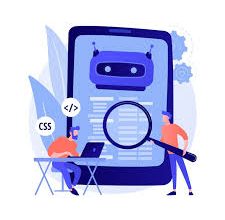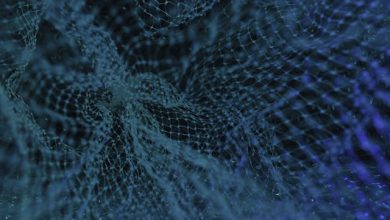Music is evolving at lightning speed. Artificial intelligence has found a place in the studio, not as a replacement for artists, but as a new kind of collaborator. As Benjy Grinberg notes, this shift is changing the way creativity happens behind the scenes.
The Rise Of AI In Music Creation
Programs like AIVA, Amper, and Soundful study thousands of tracks to understand how songs work. By learning about rhythm, harmony, and emotional tone, they can create music that aligns with a user’s vision. For producers, that means ideas can come to life almost instantly.
What once took hours in the studio can now be done in minutes. AI removes many of the technical hurdles that once slowed musicians down. The result is a faster, more accessible path to creating music for anyone who has a story to tell.
Human Intuition Meets Machine Precision
The soul of music still comes from feeling and instinct. Human intuition gives songs warmth, the phrasing, timing, and emotion that move listeners. What AI adds is precision, pattern awareness, and endless ways to experiment.
When both work together, creativity expands. Artists can use AI to spark ideas they might never have thought of on their own. The human provides the story; the machine offers new directions to explore.
It’s a partnership that keeps authenticity at the center. AI helps structure ideas, but emotion still drives the music. Together, they create a balance between imagination and innovation.
How AI Tools Work Behind The Scenes
Behind every smart music tool is a model trained on massive libraries of sound. These systems detect patterns in chords, melodies, and rhythms that define different genres. In doing so, they learn how music creates emotion.
When a user requests a certain vibe, like “moody piano” or “bright indie pop”, the AI builds a track that fits. It doesn’t copy old songs; it generates something new based on what it’s learned. That’s why the results often sound familiar yet fresh.
In a sense, AI composes the way humans do, at a much larger scale. It can draw from thousands of influences at once. The outcome is a blend between human direction and machine-assisted creativity.
Redefining The Role Of The Producer
Producers are becoming more like creative directors than just engineers. With AI capable of drafting melodies, arranging harmonies, and mixing tracks, producers can focus more on emotion and storytelling. Technology handles the routine, freeing space for artistry.
Instead of replacing producers, AI works alongside them. It can suggest ideas, help shape a song’s structure, and turn rough sketches into polished arrangements. The artist still makes the final call. AI just gives them more options.
It also helps overcome creative blocks. A producer can start with an AI-generated sketch and then refine it with their own sound and perspective. That mix of technology and heart leads to something personal yet elevated.
Empowering Independent Artists
For independent artists, this technology changes everything. What once required a full team and an expensive studio can now be done on a laptop. AI makes high-quality production tools available to everyone.
Even musicians without formal training can turn their ideas into complete songs. AI bridges the gap between inspiration and technical skill. It gives creators the freedom to experiment and find their voice.
This openness is bringing more diversity to music. Artists from every background can share their stories in new ways. The playing field is leveling, and creativity is thriving because of it.
Collaboration, Not Competition
The best use of AI isn’t to replace musicians, it’s to collaborate with them. Machines handle repetitive or technical work, leaving humans to focus on emotion, storytelling, and performance. It’s a partnership built on balance.
AI encourages artists to explore. They can ask the system to remix a track in a new key or try a genre they’ve never attempted. These experiments often lead to breakthroughs that might not have happened otherwise.
In this way, AI becomes another instrument in the creative process. It extends imagination instead of limiting it. When used with intention, it enhances what makes each artist unique.
AI And The Evolution Of Musical Genres
AI doesn’t just change how music is made. It’s reshaping what music sounds like. Algorithms blend elements from different genres, creating fresh hybrid styles that challenge tradition. New sounds are emerging that sit between categories.
This fusion keeps music exciting. A system might combine jazz harmonies with electronic beats or layer global rhythms under pop melodies. These combinations open doors for artists to reinvent what’s possible.
Technology has always driven musical evolution, from electric instruments to digital production. AI is the next step in that journey, offering endless ways to explore sound.
The Future Of AI In Music Production
As AI evolves, it’s becoming more intuitive and personalized. Imagine tools that learn your creative habits and adapt to your style in real time. Inspiration and automation will soon blend so naturally that the process feels seamless.
Still, the essence of music will always be human. People crave emotion, honesty, and connection, things no algorithm can fully recreate. Technology can shape the sound, but only humans can give it meaning.
The artists who thrive will be using AI not as a shortcut but as a collaborator. The best music will come from those who mix emotion with innovation and stay true to their voice.
Education And Skill Development In The Age Of AI
AI is also transforming how musicians learn and grow. Intelligent platforms now teach composition, theory, and production interactively, adjusting to each user’s pace. This makes learning music more personal and engaging.
For experienced creators, these tools open new learning paths. They can experiment with unfamiliar genres, sounds, or production methods without limits. By combining curiosity with technology, musicians sharpen their craft and expand their creativity.
Conclusion
AI-powered composition tools are changing the creative landscape, giving artists new ways to make and share music. They’re not replacing the human element. They’re expanding it. As Benjy Grinberg reminds us, the goal isn’t to make art without people, but to give people new ways to make art.



